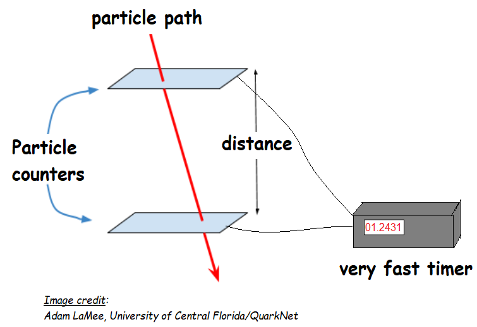How Speedy are These Muons?

In this activity, students use authentic detector data to apply simple 1D kinematics (v=d/t), interpret graphical data, and evaluate measurement uncertainties.
In this activity, students use authentic detector data to apply simple 1D kinematics (v=d/t), interpret graphical data, and evaluate measurement uncertainties. The data were collected using a Cosmic Ray Muon Detector. This detector consists of two “counters” which each produce a signal when a charged particle passes through. The counters are connected to a very fast timer that measures in nanoseconds. (1 ns = 10-9 sec.) To gather the data, students set the counters with some vertical separation, which they measured. The vertical separation was much larger than the widths of the counters.
